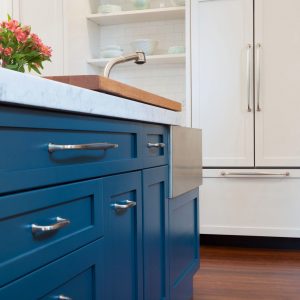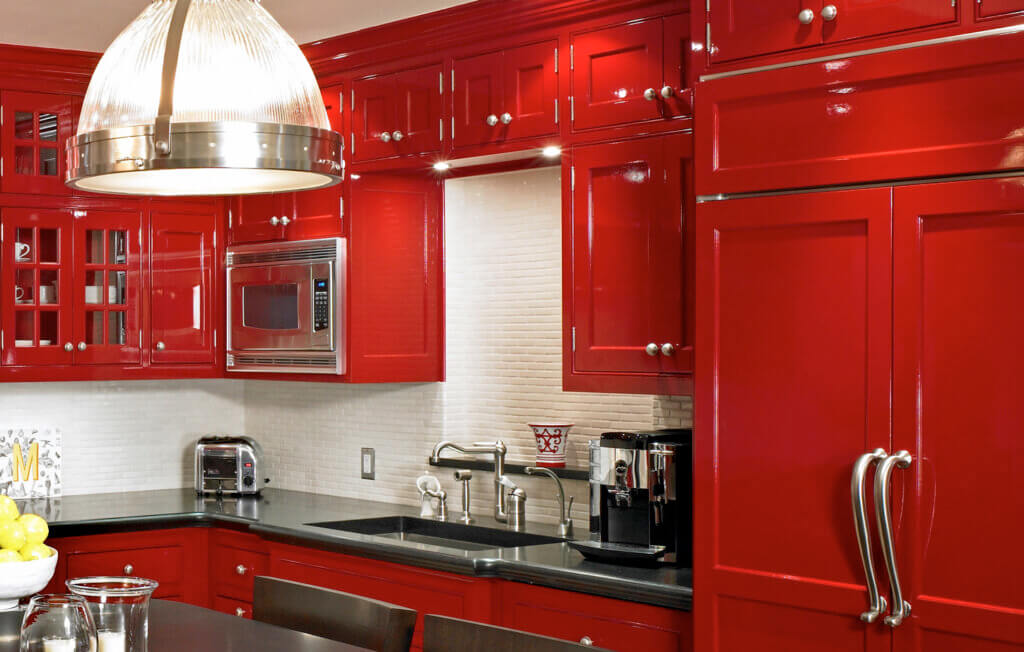Paint is a major part of a kitchen design. From cabinets to walls, there are endless color options, and picking the right ones can quickly become overwhelming. Here at Catchlight, we’re here to help you find the perfect color to complement your style and space.
FOR CABINETS
There are standards for paint color on cabinets. The timeless option is, of course, white. Whether it’s a bright white, creamy white, or white with a grayish undertone, white gives you the most flexibility when it comes to designing other spaces in your kitchen. You can pair white with any aesthetic and any color. If you’re the type of person who loves to switch designs up, white gives you the ability to do so without any adverse implications.
 However, there are plenty of bolder cabinet color options, bringing the design focal point to the actual cabinetry. A deep gray or charcoal gives you some of the design freedom as white, but allows your cabinets to really pop. Shades of blue and specifically navy have been “in” for quite some time, especially in coastal areas. However, deep greens are currently all the rage and provide a nice “moodiness” to a kitchen space, creating a real WOW moment.
However, there are plenty of bolder cabinet color options, bringing the design focal point to the actual cabinetry. A deep gray or charcoal gives you some of the design freedom as white, but allows your cabinets to really pop. Shades of blue and specifically navy have been “in” for quite some time, especially in coastal areas. However, deep greens are currently all the rage and provide a nice “moodiness” to a kitchen space, creating a real WOW moment.
FOR WALLS
Picking the perfect wall color to accompany your cabinets and backsplash completely depends on your design style. As mentioned above, any shade of white for the cabinets gives you almost limitless choices when it comes to a wall color. Earthy tones will create a space that feels warm and welcoming, while bold colors will draw the focus to the stark contrast and make all the elements within your kitchen pop.
If you opt for the bold color on your cabinets, or if you have natural wood cabinets like walnut or oak, chances are you’ll want to go neutral with the wall color. This allows your bold cabinets to shine and not compete with another bold color within the space. Beiges, off-white, creamy whites, and lighter grays tend to work in conjunction with these bold cabinet colors.
At the end of the day, a home should be a reflection of the owner’s personal style. Since the kitchen is one of the most utilized spaces in the home, it’s important that your paint decisions make you feel comfortable. If you’re thinking about painting your kitchen space and are not sure where to start, we’re here to help guide you and provide insight on colors that would blend seamlessly with the rest of your home.
If you’re interested in working with a certified color consultant before making any final decisions on paint color, we can also help facilitate that!



